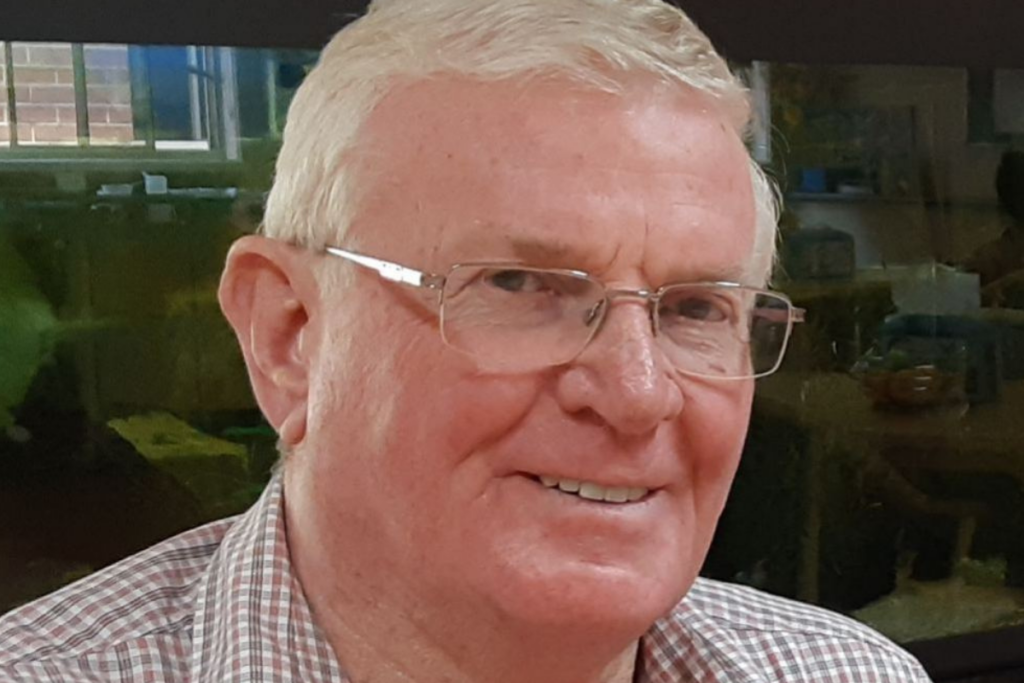Fiercely independent, 76-year-old Doug has found that learning to accept help – and new limitations – can be physically and mentally challenging.
When grandfather of five, Doug, found two small lumps on his hip, his GP recommended antibioticsmedication used to kill and/or slow the growth of bacteria.
“The lumps on my waistline were the size of marbles and pretty tender, so I couldn’t wear a belt. My GP thought they were cystsabnormal growths that are usually filled with liquid or air, so he prescribed antibiotics to help get the inflammation down before removing them. When there was no improvement after three weeks, he sent me to a dermatologist to get a sample,” recounts Doug.
“When I went back for the results, an associate of the dermatologist was in the room looking very sombre. I thought, what the hell is going on here? That’s when she told me I have cancera disease where abnormal cells split without control and spread to other nearby body tissue and/or organs. That’s all she said – and to go and visit the people at Chris O’Brien Lifehouse.”
After an excruciating two-week wait, Doug received a full explanation from an oncologista doctor who specialises in the study, diagnosis and treatment of cancer. It was angiosarcoma, it had metastasised, and there was no cureno evidence of disease; complete cancer remission.
“I didn’t have any idea what was going on, which was really mentally taxing, but even more so when I was told what type of cancer it was. That’s when the realisation of what I had really impacted me.”
Angiosarcomas are rare types of sarcomas (cancers arising from bone or soft tissuetissue/the material that joins, holds up or surrounds inside body parts such as fat, muscle, ligaments and lining around joints) that develop in the lining of bloodthe red bodily fluid that transports oxygen and other nutrients around the body vessels or lymph vesselsa network/chain of thin tubes that moves lymph fluid around the body throughout the body. They are most commonly found in the skin, but can also be found in the breast, liver, spleen, bone or heart.
A PET scan revealed that Doug’s cancer originated in his tibia, or shin bone. He also had multiple other lesions in the muscles and soft tissues of his lower limbs. He started chemotherapya cancer treatment that uses drugs to kill or slow the growth of cancer cells, while minimising damage to healthy cells within a week of being diagnosed, completing 12 weekly sessions alongside five sessions of radiation. Doug also received Keytruda, followed by chemotherapy again, and doxorubicin monthly.
“Mentally, it was a very tough time. Physically, the treatment was very tiring, and the side effects from the chemotherapy have been difficult. I have pain in my stomach and leg, and my fingers and toes can go numb. I get cramps in my foot all the time and need a walker to keep my balance and take rests on.
“The main issue is how frustrating it is to not be able to do things or go places. I had polio as a child and learned to be very self-sufficient, I never relied on anyone. Now I can’t even do the edges of our lawn or cut our grass. It’s been hard for me to accept help, but I need to remind myself that these people are here to help. The side effects have been challenging. I try to do things with my hands but there’s too much pain, especially if I knock them on something. I can barely do my buttons up. But everyone has their hurdles to jump over, and I know there are people worse off out there.”
Doug credits his faith and the support of his family with helping him along.
“My boys are very supportive, and my wife takes good care of me. I don’t know how long I’m going to last, but my son says he wants me around for the next 10 years at least, so I have no plans on cashing in at the moment! It makes me think, maybe I do have a chance after all.”
No stranger to the world of cancer, Doug’s brother passed at 48 from stomach cancer, and his mother underwent a double mastectomycomplete or partial removal of one or both breasts.
“There’s so much publicity about more common cancers, but I don’t hear anything about sarcomas. I keep hearing about these younger people who are fighting cancer too. There is a lot of pain out there, and I thought, maybe I can help someone by sharing my story, by contributing to Rare Cancers. We all have our challenges, no one is alone. You gotta have faith.”
